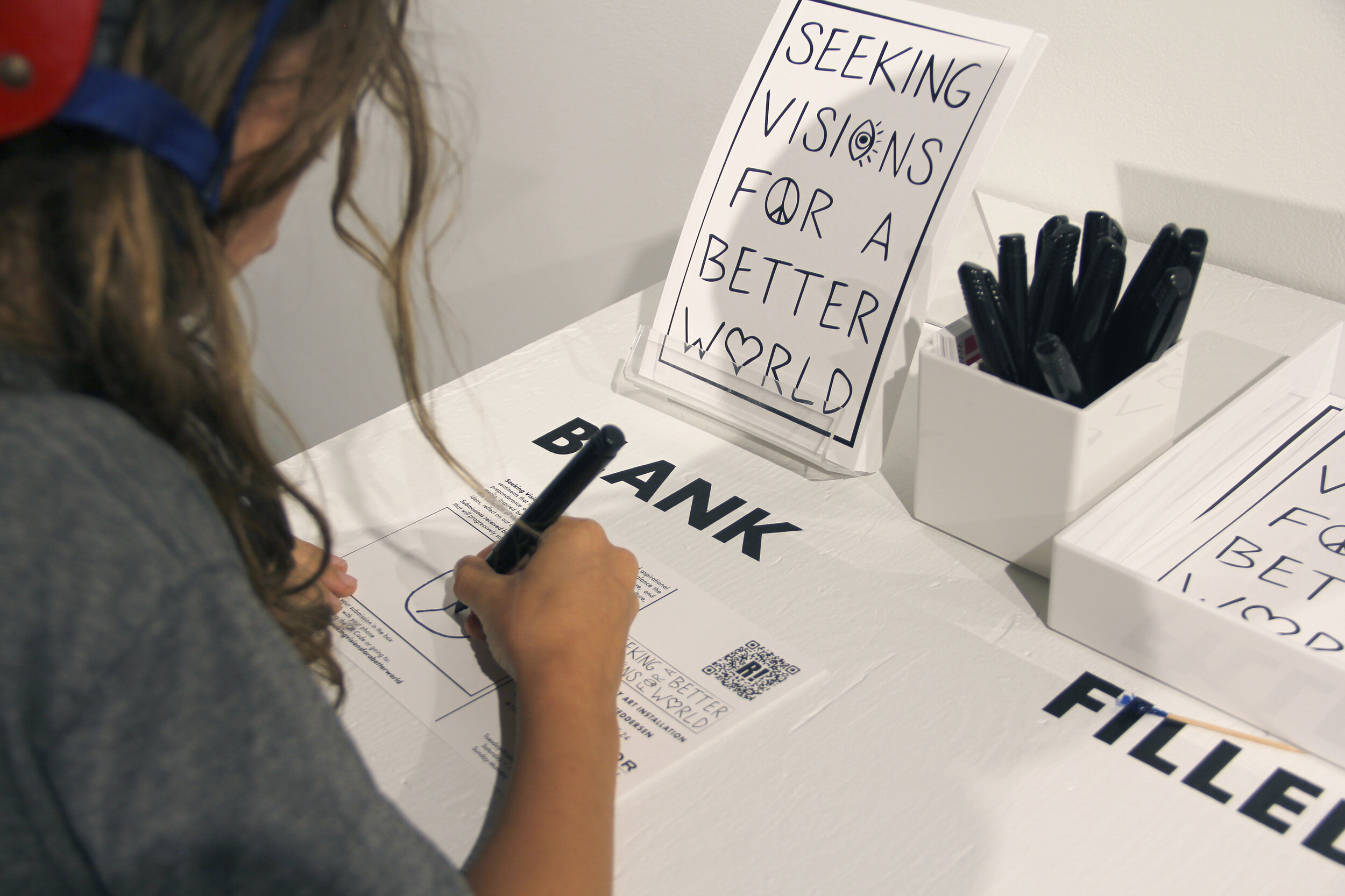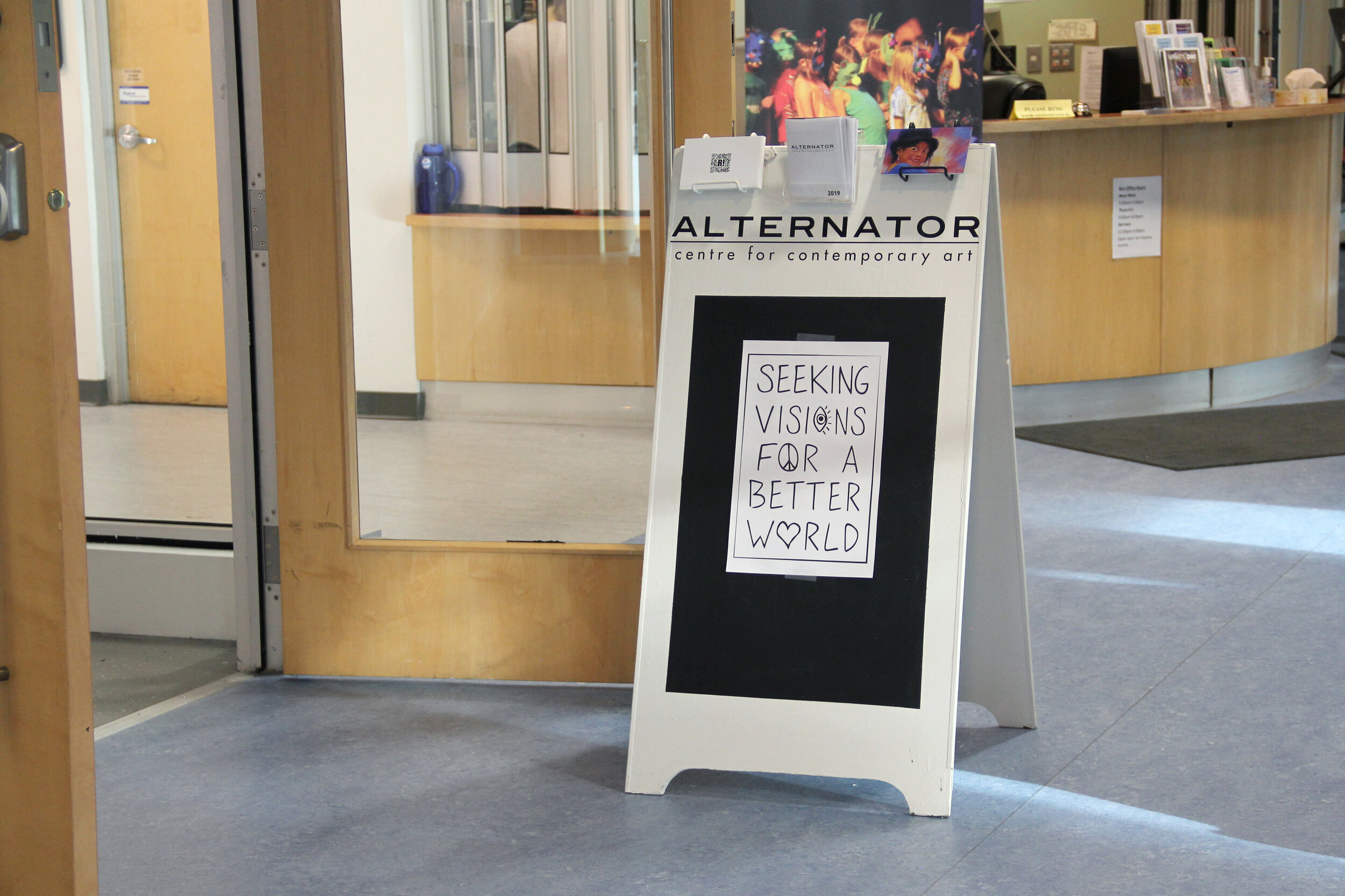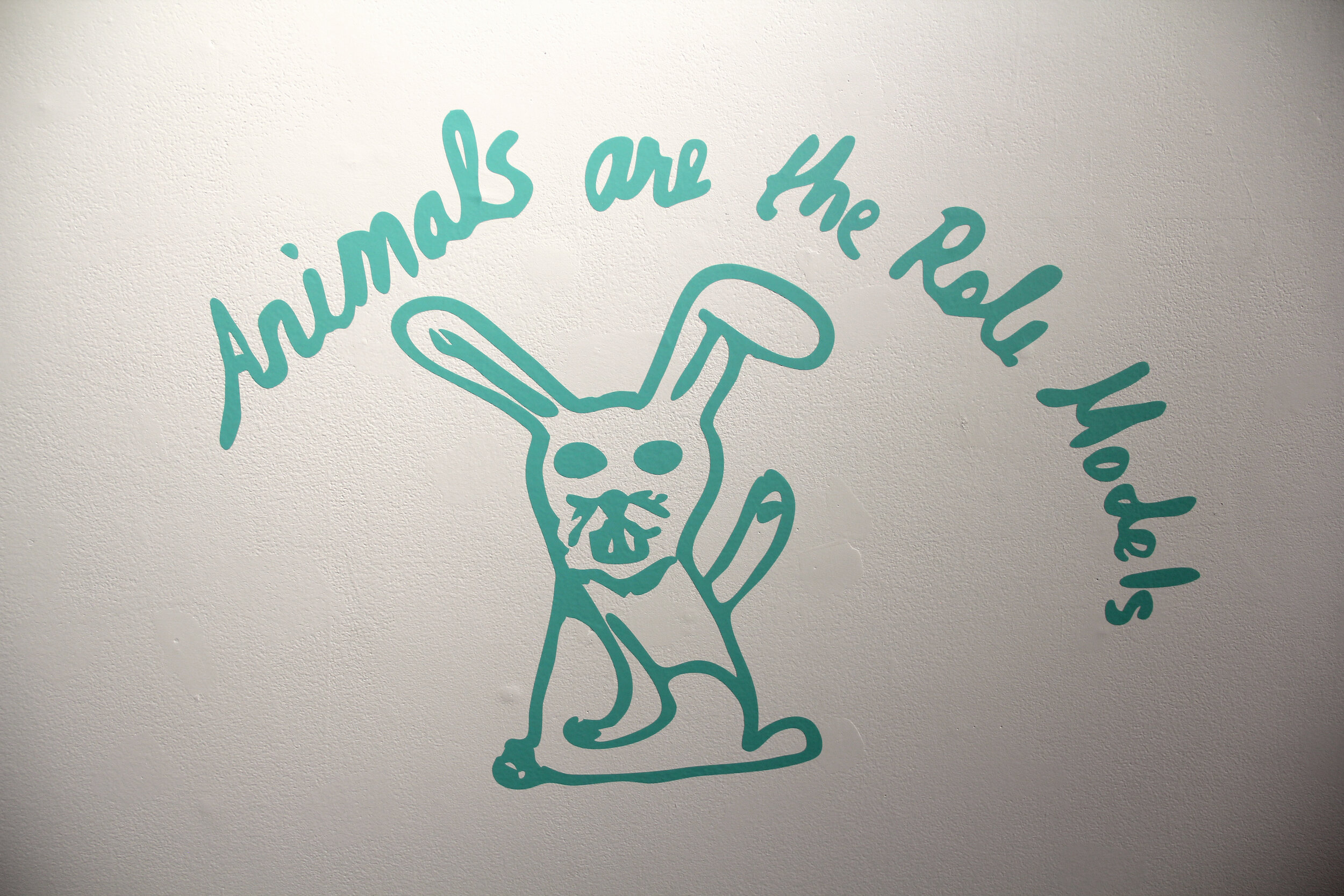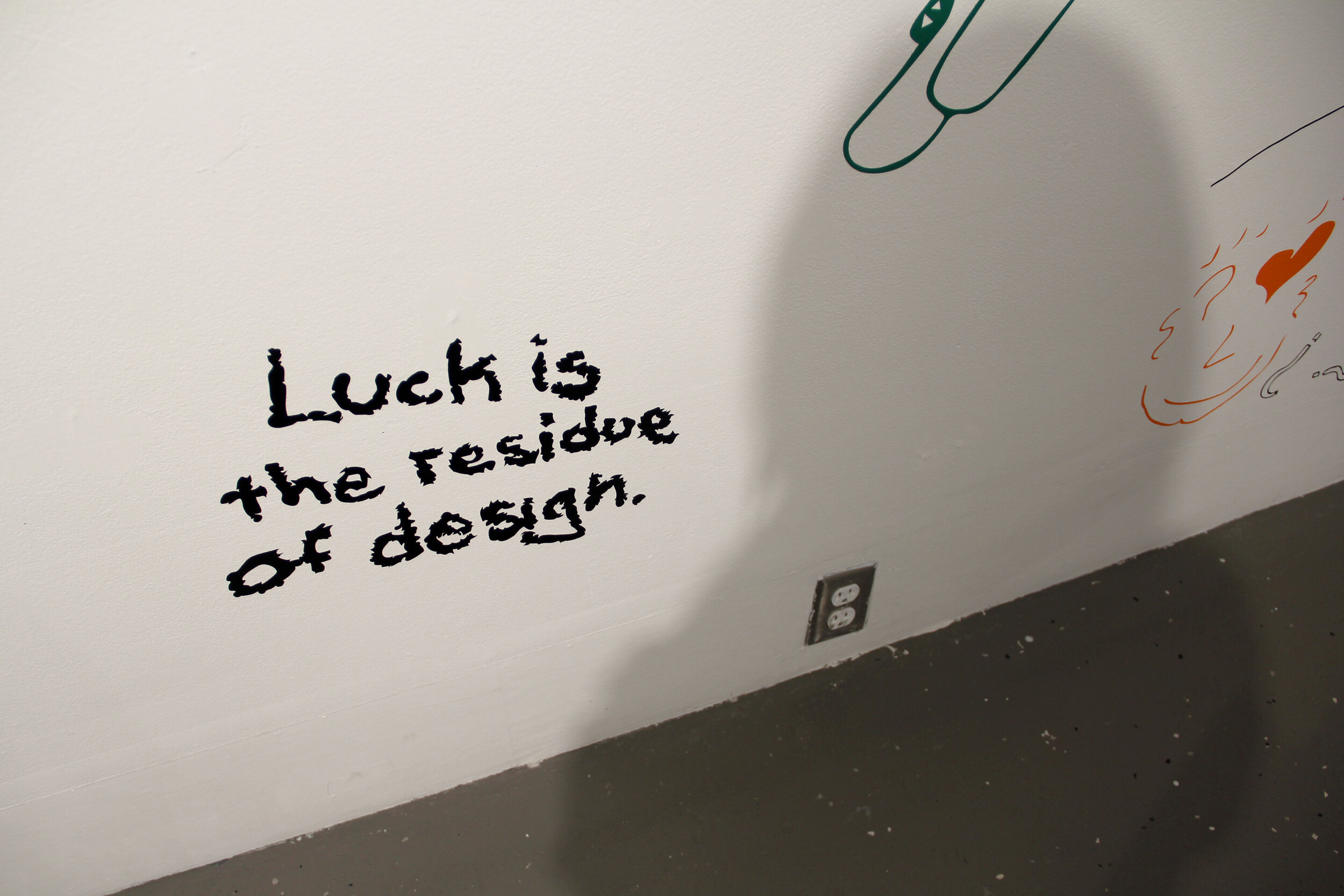Seeking Visions for a Better World // Bree Apperley
An essay response to Ryan! Feddersen’s Seeking Visions for a Better World
Like the sacred trickster coyote of Indigenous plateau lore, the pieces that RYAN! Feddersen create make us feel empathy while modeling to us our missteps, so that we may choose better for ourselves. RYAN! Feddersen (b. 1984, Wenatchee, Washington) is a mixed-media installation artist who conceives large-scale, site-specific pieces which use interactivity to create opportunities for personal introspection and discovery in the local community. RYAN! is an enrolled member of the Confederated Tribes of the Colville Reservation, and descendant of the Okanagan and Arrow Lakes peoples. After graduating in 2009 with a Bachelor of Fine Arts Degree, magna cum laud, from the Cornish College of the Arts in Seattle, RYAN! has worked with the Seattle Office of Arts and Culture, Tacoma Art Museum, MoPOP (EMP), The Henry Gallery, Museum of Northwest Art, Spokane Arts, Spaceworks, and the Missoula Art Museum. Recently, Feddersen was named a 2018 National Fellow in Visual Arts with the Native Arts and Cultures Foundation. RYAN! makes work that honours an Indigenous perspective while reclaiming, reanimating and revisualizing the dominant Western cultural narrative.
Photo by Meg Yamamoto, courtesy of Creative and Critical Studies, UBCO
“By swapping the power players, thereby changing its meaning, and increasing its accessibility to the audience, Feddersen enabled the work to be to symbolically “taken back” and have its history rewritten.”
The early work of RYAN! Feddersen began with a look at accessible history, finding entry points in the established narrative that were ripe for revision. In the 2010 piece Nellies, an edition of 50 cast busts of Nellie Cornish, visionary founder of the Cornish College of the Arts, were made available to artists affiliated with the college as blanks on which they could express themselves. The original Nellie bust was submitted in a competition for an award statue hosted by the Cornish College of the Arts, but at that time, the Nellie bust was declined because of its intimidating look. By bringing back Nellie, Feddersen reclaimed a scorned representation of this noble character, charting a new course for her biography. Another early example of readdressing history is the piece Bumber by Number. In this artwork RYAN! created an enlarged paint-by-number version of the Edouard Manet painting “Le Dejeuner sue L’Herbe”, a piece that was originally rejected in 1863 by the Salon de Paris for its presence of a nude woman alongside clothed bourgeois men. In her version, Feddersen not only recast the painting as a mural and stage, allowing the painting to be stepped into and drawn upon, but she also replaced the male models with images of her two fully-clothed sisters and swapped out the subservient female in the background for a man. Once again RYAN! retrieved a subject which had been wrongly accused in the past, making amends while also recontextualizing it. By swapping the power players, thereby changing its meaning, and increasing its accessibility to the audience, Feddersen enabled the work to be to symbolically “taken back” and have its history rewritten.
In the pieces 900 Horses, Kill the Indian, Save the Man and Unveiling the Romantic West, RYAN! goes straight for the jugular of pioneer mythologizing. 900 Horses reexamined a 1946 monument erected to commemorate a mass horse slaughter which took place in 1858 and contributed to the demise of the plains Indian population. This monument to suppression was a symbol of power that reinforced a particular dominant viewpoint. Feddersen, working together with the community, created stencil effigies for each horse killed, refocusing the site away from the monumental and toward the memorial, a remembrance of each individual life lost. Kill the Indian, Save the Man and Unveiling the Romantic West are layered vinyl wall pieces that both use thermochromatic ink to allow the audience to not only make their mark on the work but also to reveal hidden truths obscured beneath. In these works two cultural perspectives are shown. The top layer of Unveiling the Romantic West is a recreation of a mural by Edgar Paxson of a Lewis and Clark expedition that in its simplicity, idealized the colonial enterprise. On the layer beneath, Feddersen has added back details such as accurate clothing and designs worn by the indigenous people at that time, food that the explorers would have eaten (crops that were tended to and harvested by the indigenous people) and native animals; all specifics of a rich environment which point to a more subtle and complicated truth. Kill the Indian, Save the Man is a sobering look at residential schools. What looks like a censored map gives way, again through touch, to US boarding school names that are quickly vanishing in our educational history through academic neglect. Like a dirty secret, the systematic stripping away of culture, language and religion that took place in these schools and was sanctioned by the state, is something left unspoken and undetected, hidden beneath.
Photo by Meg Yamamoto, courtesy of Creative and Critical Studies, UBCO
Another approach that RYAN! Feddersen has used to go back and reclaim history is through upending the colonial concept of Manifest Destiny. Manifest Destiny is the idea that the United States was destined, by God, to expand its dominion and spread democracy and capitalism across the entire North American continent. The photographic and ethnographic work of Edward S. Curtis embodied this philosophy. Curtis, in his documentation of the “vanishing race” of Indigenous people from the early 20th century, scientifically categorized his subjects into dehumanizing and reductive types. Feddersen uses this idea in Post-Human Archive to flip the script. In her piece the audience takes a photo of themselves (yes, a selfie), uploads it to a database, which through an algorithm is assigned a classification that has been contemporized and based on E. S. Curtis’s terms of organization. Everyone is informed that human life is soon to disappear. Feddersen puts us in the vulnerable position of being defined by a power outside ourselves, allowing the audience to gain insight into the destructive nature of these historicizing projects.
Bringing together the past and the present is the role of Coyote in RYAN! Feddersen’s work. The Coyote is the trickster in the oral tradition of the Basin Plateau region, a sacred mythical character who is resurrected at the beginning of each legend only to die again by the end. The misunderstandings that Coyote is involved in are meant to make us laugh, but also allow us to see the folly of our ways. In Feddersen’s Coyote Now pieces, Coyote is a catalyst in contemporary events such as global warming and inventing the Internet, and we also find him negotiating the pains of modern life, like when trying to de-stress on a camping trip. As the legend goes, Coyote is immortal, and in so being, can be reanimated by cousin Fox with only a patch of fur, a whisker or bone. The audience of these pieces can bring Coyote back to life with symbolic tools that Feddersen has created from colourful crayons cast in the shape of bones. While the community sets to work colouring in the black and white murals of Coyote’s adventures, they are engaging with imaginative story-telling, updating Coyote’s usefulness to our present selves. This fusing of ancient myth with contemporary life is gifted to us as a way to move forward through our increasingly scientific and secular existence with a spiritual guide.
“The commercial and capitalist values of greed, ambition and exclusivity beget age-old tactics of wielding power through destruction, conversion and expansion.”
RYAN! Feddersen can trace the malaise of contemporary life and our acknowledged position in the Anthropocene epoch to colonial values embedded within Western ideology. The commercial and capitalist values of greed, ambition and exclusivity beget age-old tactics of wielding power through destruction, conversion and expansion. These themes of dislocation and of environmental degradation are explored in several of RYAN!’s later pieces. In Disconnected Towers, from 2015, sculptures that reference electrical tie-offs for new developments are topped with glowing acrylic Lucite symbols of modernity; a dollar sign, a wifi icon, an upward pointing graphical arrow (“people continue to buy! buy! buy!”, it seemingly says...). These sculptures reproduced as the exhibition continued mimicking the parasitic takeover of land for commercial interests. Blink and the former residents, who in most cases are the poor and racial minorities, will be steamrollered into oblivion.
These towers make another appearance in the 2017 piece Manifest Signs IV. This vinyl mural depicts two of these tower tie-offs alongside a mound of bison skulls and the skeleton of our mischievous anti-hero Coyote. Cranes rise up ominously in the distance picking at the skulls. Like the horses in 900 Horses, the mass slaughter of bison by settlers purposely deprived the plains Indigenous population of their primary food source and eventually forced them to move westward onto small reservations for survival. A pointed look at avarice is also witnessed in Feddersen’s wall piece Black Snake Rising from the same year and the 2018 piece Squeeze. In Black Snake Rising, species most affected by our gluttonous consumption are represented and intertwined with petroleum products and giant black snakes of oil. The audience was invited to add a decal of the oil-based product they used most, underlining our complicit relationship to this fatal feedback loop. Squeeze calls out gentrification and privatization directly through the placement of oversized price tags which were affixed to various public amenities such as benches, trees and newspaper boxes. The prices increased and the number of tags grew over the course of the day, adding to the sense of anxiety of being literally priced-out of city infrastructure. RYAN! encourages us to revisualize the motives responsible for contemporary capitalist ailments such as gentrification and mass consumption as the same exploitive impulses used by colonizing settlers.
Drawing on Feddersen’s pieces, Tag You’re It (2012) and Happenings (2017), both of which included a participatory forum on personal expression in public spaces, the work RYAN! is presenting this summer at the Alternator Centre for Contemporary Art, titled Seeking Visions for a Better World, meditates on the concept of cognitive psychology using the visual language of graffiti culture and pictography. The piece is composed of large plotter-printed vinyl words, doodles and drawings affixed to the walls of the gallery. These images have been solicited by the local community from social media call-outs, web portals within University of British Columbia’s Okanagan’s Faculty of Creative and Critical Studies and postcards embedded with QR codes. RYAN! has then translated this visual information, changing the colour and scaling up the submissions to resemble graffiti-style wall tags.
Seeking Visions for a Better World is looking for aspirational sentiments to counterbalance the dystopic visions of the future so often seen in Hollywood films and television as well as contemporary fiction. Feddersen feels that if we continue to give attention to this oppressive fear of the future, society will subconsciously gravitate towards it. Instead RYAN! asks us to call out our hopeful and positive dreams of the future, supporting and encouraging each other like the scrawls one would find on the walls of woman’s public bathrooms; “You go girl”, “I got your back honey”, “You are beautiful and strong”. Why are these messages from the public, unmediated and uncensored yet so positive, pushed back to the darkest recesses of our communal spaces? RYAN! wants to bring these affirmations to the surface, and glorify them as the “truth” we should look towards, rather than the male-orientated, blockbuster fantasies projected onto our screens.
Photo by Meg Yamamoto, courtesy of Creative and Critical Studies, UBCO
Feddersen has taken inspiration for this piece from Indigenous pictographs, those stick-figured and elementally divine impressions left by ancient peoples that are revered for their power and mystery. Some of the Indigenous community believe that these pictographs were considered aids in the search for helping spirits concerned with healing and prophecy, a form of intergenerational communication. Every two or three days, this collective brainstorm will grow, overtaking the gallery space with the submitted symbolic responses, generating an exchange of optimistic destinies and desires.
Here in the Okanagan, there is also a complex and disordered history concerning our Indigenous people, one that is increasingly under pressure to be reclaimed, reanimated and revisualized in the way that Feddersen has been able to do through her body of work. The site of the Alternator Centre for Contemporary Art itself currently sits on the traditional, ancestral, unceded territory of the Syilx/Okanagan People. This critical renegotiation is also compounded by the fact that in Kelowna we are experiencing the encroachment of profit-making business ventures in our once sleepy lakeside city. Pockets of the downtown and central neighborhoods are being “whitewashed” by organic food markets and trendy cafes. These changes, together with the rapidly multiplying condo towers, are leaving behind a vulnerable street, low-income and marginalized population in its wake. As revealed in RYAN!’s work, Coyote reminds us that we must learn from our past mistakes and creatively engage in building a more positive story to reimagine a better future.
Bree Apperley is a Canadian writer and artist based in Kelowna, B.C. Previously, Bree has worked for organizations including Harper's Magazine, Pentagram, and Princeton Architectural Press. She holds degrees in both Fine Art and Design Art, from the Alberta College of Art + Design and Concordia University respectively. Recent publications include Crystallizations Zine (2016) and Sleeperhold Publications (Antwerp, Belgium, 2010 and 2011). For more information about the author visit https://breeapperley.com/






